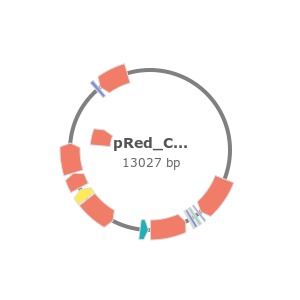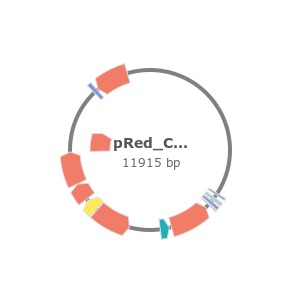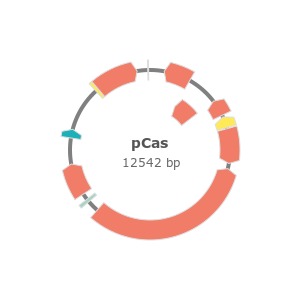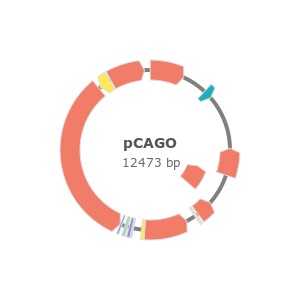MspA-D plasmid from Shuo Huang
MspA-D
Cat. No.:
MC_0068401
Availability:
4 µg of lyophilized plasmid
(1 µg for low-copy plasmid)
(1 µg for low-copy plasmid)
Price:
$65
| Keywords | Expression |
| Vector Backbone | Pet-30a(+) |
| Source | Member Deposit |
| Depositor | Shuo Huang |
| Organization | Nanjing University |
| Description | The plasmid MspA-D is designed for the preparation of a mutant Mycobacterium smegmatis porin A (MspA) protein nanopore, which is engineered with an aspartic acid at the site 91. MspA nanopore is a channel-forming protein that allows small hydrophilic nutrients to enter the bacterium. Its crystal structure has been characterized using X-ray diffraction (Science, 2004, 303, 1189-1192). The engineered MspA nanopore ( Proc. Natl. Acad. Sci. , 2008, 105, 20647-20652) is widely applied for DNA sequencing (Nat. Biotechnol., 2012, 30, 349-353) because its geometry (1 nm-long, 1.2 nm-wide constriction) provides high spatial resolution. Recently, MspA is also verified to be an excellent nanopore for single-molecule reaction (Nat. Commun, 2019, 10, 5668). In our work, the MspA-D nanopore is designed for coordination study at the single-molecule level. The most sensitive site 91 (the narrowest restriction-1.2 nm wide) of MspA is mutated to the aspartic acid which acts as the coordination site. The coordination reaction between the aspartic acid residue and single monatomic metal ions is systematically studied. The coordination principle in the confined space is unraveled (Chem. Sci., 2020, DOI: 10.1039/C9SC05260G). |
| Publication | Sha W, Jiao C, Jia W et al. Single molecule observation of hard–soft-acid–base (HSAB) interaction in engineered Mycobacterium smegmatis porin A (MspA) nanopores. Chemical Science, 2020, DOI: 10.1039/C9SC05260G. |
| Plasmid Copy | High Copy |
| Bacterial Resistance | Kanamycin |
| Growth Strain | DH5-Alpha |
| Growth Temperature | 37°C |
| Plasmid Size (bp) | 5814 |
*This material may be covered by one or more patents, trademarks and/or copy rights owned or controlled by Depositors or any third parties. This material is available to academic and nonprofit organizations for research use only. Please contact MolecularCloud at plasmid@genscript.com and the Depositor directly if you are from industrial institute or attempt for profit application. This material is not intended to be used therapeutic or diagnostic purposed in humans or animals.



